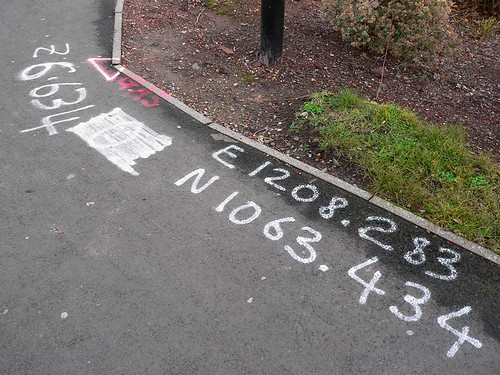 In a recent discussion on RPLS.COM, the question came up about coordinate conventions, PNEZD or PXYZD, and so on. Many surveyors still tend to use the convention of Northing (y) and Easting (x), based on how coordinates were traditionally computed using the method of latitudes and departures.
In a recent discussion on RPLS.COM, the question came up about coordinate conventions, PNEZD or PXYZD, and so on. Many surveyors still tend to use the convention of Northing (y) and Easting (x), based on how coordinates were traditionally computed using the method of latitudes and departures.
Northing/Easting (Y/X) however tends to be counterintuitive to mathematicians and many GIS applications, which are used to basic cartesian conventions of x,y. This tends to lead to one level of confusion. Similarly, surveyors often deal with geodetic coordinates, such as latitude/longitude, again a y/x convention- which one must be mindful of even when converting to other coordinate systems.
So suppose we have a simple ASCII file, containing (fabricated data for sake of illustration):
31,45039.6774,77239.7662,1601.334,FND IP
32,45118.3378,77988.9965,1607.232,FND DH
33,45968.2388,77543.6557,1607.937,IP SET
...
What exactly does this mean? For many surveyors, used to convention, they might assume it is P, N, E, Z, D (point number, northing, easting, and descriptor) However, how do we know x and y are not reversed? And this is still in the context of basic plane surveying- everything is relative to an imaginary 2-d cartesian plane.
In some instances, the answer to what the values represent may be (or at least seem) evident- if for instance
state plane coordinates(SPC) coordinates are used, and the surveyor is familiar with the range of values, he may visually be able to validate them generally. But again, guesswork is involved.
Let's add some dimension of dimensionality... what coordinate system are we talking about? What
datums, horizontal and vertical? Or... to add another wrinkle, enter
GPS-derived and geodetic coordinates, such as latitudes and longitudes- what assumptions were made there? Or to add yet another layer of dimensionality- we can talk
4-D coordinates, with
ITRF and vectors representing
crustal motion and other factors over time. These things enter more and more into the vernacular of the modern land surveyor.

I think ultimately this type of metadata, can lead toward ever increasing usability and interoperability of survey data- and ultimately standards-based systems, such as
OGC GML and tags such as
EPSG spatial reference system (SRS) tags may go a long way toward promotion of more seamless ways to integrate data from disparate sources, from the 2-d
plane surveying data all the way to high-end data without losing the fidelity, meaning and context of the data.
Technorati tags:
2d, 3d, 4d, analysis, CAD, cartesian, collaboration, community, consortium, crustal motion, geodesy, geodetic, geography, geospatial, geotagging, gis, gps, interoperability, itrf, location-based, locative, map, mapping, maps, metadata, ogc, surveying , tags, xml












 If an
If an 












 I've been a user of PDAs going back to around 1998, where I had an NEC MobilePro 400 running Windows CE. I still have the MobilePro, and loved the wide screen and Pocket Excel and Word, along with the fact that it could take standard AA batteries.
I've been a user of PDAs going back to around 1998, where I had an NEC MobilePro 400 running Windows CE. I still have the MobilePro, and loved the wide screen and Pocket Excel and Word, along with the fact that it could take standard AA batteries. The trusty Nino lasted me almost 5 years before one fall too many finally caused the screen to go. In fact, though I am hardly a trendsetter, I had been enjoying MP3s and other modern pleasures with my Nino for years before the iPod craze even caught on.
The trusty Nino lasted me almost 5 years before one fall too many finally caused the screen to go. In fact, though I am hardly a trendsetter, I had been enjoying MP3s and other modern pleasures with my Nino for years before the iPod craze even caught on. One of the things that comes to mind is integration of GPS into this type of application.
One of the things that comes to mind is integration of GPS into this type of application.











